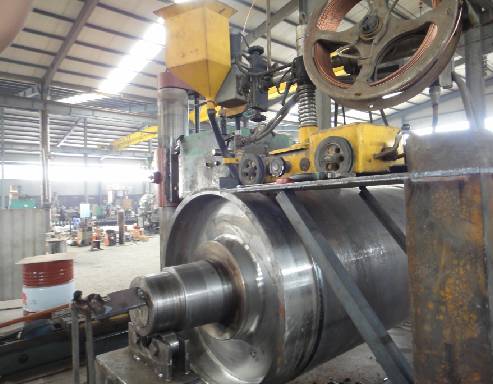 Afrikaans
Afrikaans  Albanian
Albanian  Amharic
Amharic  Arabic
Arabic  Armenian
Armenian  Azerbaijani
Azerbaijani  Basque
Basque  Belarusian
Belarusian  Bengali
Bengali  Bosnian
Bosnian  Bulgarian
Bulgarian  Catalan
Catalan  Cebuano
Cebuano  Corsican
Corsican  Croatian
Croatian  Czech
Czech  Danish
Danish  Dutch
Dutch  English
English  Esperanto
Esperanto  Estonian
Estonian  Finnish
Finnish  French
French  Frisian
Frisian  Galician
Galician  Georgian
Georgian  German
German  Greek
Greek  Gujarati
Gujarati  Haitian Creole
Haitian Creole  hausa
hausa  hawaiian
hawaiian  Hebrew
Hebrew  Hindi
Hindi  Miao
Miao  Hungarian
Hungarian  Icelandic
Icelandic  igbo
igbo  Indonesian
Indonesian  irish
irish  Italian
Italian  Japanese
Japanese  Javanese
Javanese  Kannada
Kannada  kazakh
kazakh  Khmer
Khmer  Rwandese
Rwandese  Korean
Korean  Kurdish
Kurdish  Kyrgyz
Kyrgyz  Lao
Lao  Latin
Latin  Latvian
Latvian  Lithuanian
Lithuanian  Luxembourgish
Luxembourgish  Macedonian
Macedonian  Malgashi
Malgashi  Malay
Malay  Malayalam
Malayalam  Maltese
Maltese  Maori
Maori  Marathi
Marathi  Mongolian
Mongolian  Myanmar
Myanmar  Nepali
Nepali  Norwegian
Norwegian  Norwegian
Norwegian  Occitan
Occitan  Pashto
Pashto  Persian
Persian  Polish
Polish  Portuguese
Portuguese  Punjabi
Punjabi  Romanian
Romanian  Russian
Russian  Samoan
Samoan  Scottish Gaelic
Scottish Gaelic  Serbian
Serbian  Sesotho
Sesotho  Shona
Shona  Sindhi
Sindhi  Sinhala
Sinhala  Slovak
Slovak  Slovenian
Slovenian  Somali
Somali  Spanish
Spanish  Sundanese
Sundanese  Swahili
Swahili  Swedish
Swedish  Tagalog
Tagalog  Tajik
Tajik  Tamil
Tamil  Tatar
Tatar  Telugu
Telugu  Thai
Thai  Turkish
Turkish  Turkmen
Turkmen  Ukrainian
Ukrainian  Urdu
Urdu  Uighur
Uighur  Uzbek
Uzbek  Vietnamese
Vietnamese  Welsh
Welsh  Bantu
Bantu  Yiddish
Yiddish  Yoruba
Yoruba  Zulu
Zulu conveyor component
Understanding Conveyor Components A Key to Efficient Material Handling
Conveyor systems play a pivotal role in various industries, ranging from manufacturing and warehousing to packaging and logistics. The functionality of these systems is heavily reliant on their components, which work in harmony to ensure efficient and reliable material handling. In this article, we'll delve into the essential components of conveyor systems, highlighting their purposes and importance in various applications.
1. Belts The Backbone of Conveyors
At the heart of most conveyor systems lies the conveyor belt. This continuous loop of material is responsible for transporting goods from one point to another. Conveyor belts come in various types, including flat belts, modular belts, and cleated belts, each designed for specific applications. For instance, flat belts are commonly used for light to medium-weight goods, while cleated belts are ideal for transporting items at an incline. Selecting the right belt material and type is crucial for optimizing throughput and minimizing wear and tear.
2. Rollers Supporting the Load
Rollers are critical components that provide support and facilitate the movement of the conveyor belt. Positioned underneath the belt, they enable it to glide smoothly over the conveyor frame. There are different types of rollers, such as return rollers, carry rollers, and impact rollers, each serving its specific purpose. For instance, impact rollers are designed to absorb shock and protect the belt when heavy items are loaded onto it. Proper maintenance of rollers ensures that they remain free of obstructions, thereby enhancing the efficiency and lifespan of the conveyor system.
3. Motors and Drives The Power Behind Movement
conveyor component

The movement of conveyor belts is powered by motors and drive systems. Electric motors are commonly utilized to provide the necessary torque and speed for the conveyor's operation. The selection of the right motor depends on the specific application requirements, including the load capacity and speed. Additionally, drive systems, such as pulleys and gearboxes, help to convert the motor's rotational motion into linear motion, propelling the conveyor belt forward. Ensuring the right alignment and tension within this system is essential to prevent slippage and inefficiencies.
4. Controls and Sensors Enhancing Automation
In modern conveyor systems, controls and sensors play a significant role in automating operations. Control panels allow operators to manage the speed and direction of the conveyor, while sensors can detect the presence of items on the belt and trigger necessary actions, such as stopping or diverting the load. Integrating advanced technologies, such as PLC (Programmable Logic Controllers) and IoT sensors, can lead to increased efficiency and streamlined processes in material handling.
5. Safety Features Ensuring Operator Protection
Safety is paramount in any industrial setting, and conveyor systems are no exception. Including safety features such as emergency stop buttons, guardrails, and warning signs helps to protect operators from potential hazards. Regular safety audits and training for operators are essential to ensure that everyone is aware of the risks and knows how to respond in case of an emergency.
In conclusion, understanding the various components of conveyor systems is fundamental for anyone involved in material handling. From belts and rollers to motors and control systems, each component plays a critical role in ensuring smooth and efficient operations. By investing in the right conveyor components and maintaining them diligently, businesses can enhance productivity, reduce operational costs, and ensure the safe movement of materials within their facilities.
-
Revolutionizing Conveyor Reliability with Advanced Rubber Lagging PulleysNewsJul.22,2025
-
Powering Precision and Durability with Expert Manufacturers of Conveyor ComponentsNewsJul.22,2025
-
Optimizing Conveyor Systems with Advanced Conveyor AccessoriesNewsJul.22,2025
-
Maximize Conveyor Efficiency with Quality Conveyor Idler PulleysNewsJul.22,2025
-
Future-Proof Your Conveyor System with High-Performance Polyurethane RollerNewsJul.22,2025
-
Driving Efficiency Forward with Quality Idlers and RollersNewsJul.22,2025





























